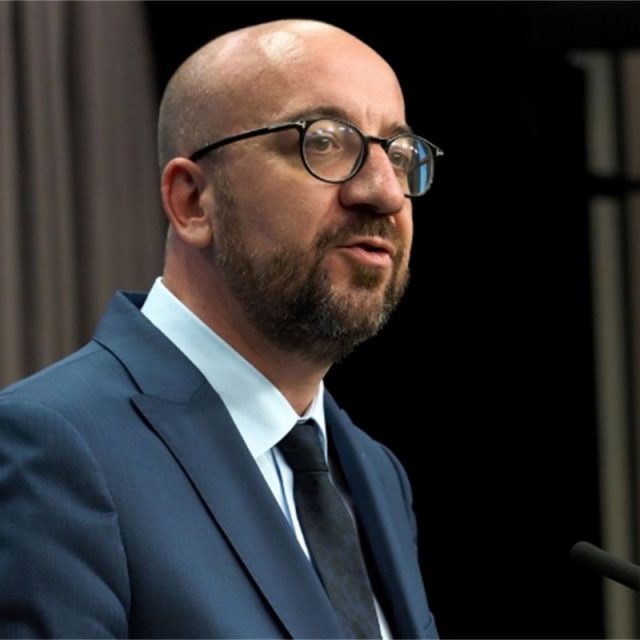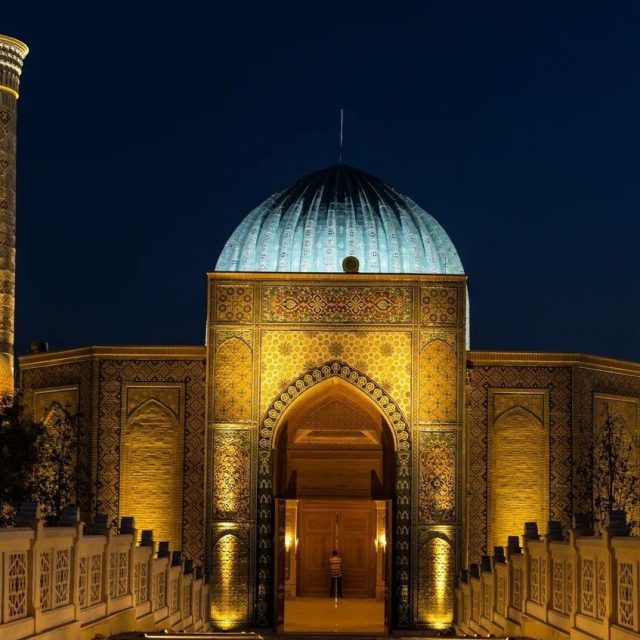Next week marks one of the most solemn days in Europe – Armistice Day. It commemorates what some know as the Great War, a conflict that was far from “great” for the tens of thousands who perished in it
Much of WW1, of course, is a war that took place in Belgium and this is a milestone that is still solemnly remembered each year in the city of Ypres, scene of so much destruction at the time.
The city of Ypres in Flanders is forever associated with the war and it marks 11 November – Remembrance Day – with a series of specially arranged events.
These commence at 8.45am with a commemoration at the French cemetery St. Charles de Potyze followed, at 9.15am with a service in St. Georges Memorial Church. At 9.30am there is a Eucharist in St. Martin’s Cathedral followed at 10.20am by a Poppy Parade led by the Ypres Surrey Pipes & Drums.
The comes a ceremony at the Belgian Monument at 10.30am and, 30 minutes later at 11.00am another ceremony and Last Post under the Menin Gate (by invitation only). At 11.50am there is a parade from Menin Gate to Ypres Main Square and a carrillon concert by Ludo Geloen at 2pm. More events follow including, at 2.30pm a guided walk, a concert The Great War Remembered at 5pm and, at 8pm, the famous Daily Last Post Ceremony under the Menin Gate.
Other activities are planned for Saturday 9 November including, at 5pm and also 8.15pm, Great War Remembered concerts and, on Sunday 10 November, an Ypres and WWI guided walk (3pm) and, at 3.30pm Remembrance Irish Cross and Sint-Jan. On Tuesday 12 November at 11.00am there will be a ceremony at the Indian Monument (Menin Gate).
Peter Slosse, of Ypres Tourism, commented: “Armistice Day is an important day for Ypres every year. It attracts several thousand visitors from the UK, Flanders and a few other countries.”
“There is always a special and serene atmosphere on that day, which you only have on Armistice Day in Ypres. It is more than worth experiencing. A large part of the visitors on 11 November come to our town every year on Armistice Day.”
The Ypres Salient is the area around Ypres which was the scene of the heaviest battles during the Great War. The salient was the site of three major battles—First Ypres (October–November 1914), Second Ypres (April–May 1915; marked by the Germans’ first use of poison gas as a weapon), and Third Ypres (also called Passchendaele; July–November 1917)—with total Allied and German casualties exceeding 850,000.
The total number of military and civilian casualties in World War I was about 40 million: estimates range from around 15 to 22 million deaths and about 23 million wounded military personnel, ranking it among the deadliest conflicts in human history. It is estimated that as many as 6m civilians may have also died.
If you are in the area for these events try to also include a visit to some of the well-known local memorials to the war and other conflicts such as The Menin Gate, owned and maintained by the Commonwealth War Graves Commission. The official name of the monument is the Ypres (Menin Gate) Memorial.
|
The Menin Gate is the most famous Commonwealth war memorial in Flanders and, at very evening at 8pm, the Last Post is sounded, a particularly moving ceremony.
|
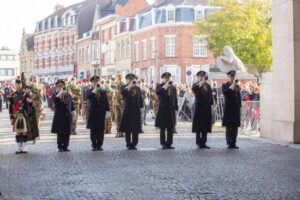 |
Another must see place here is the In Flanders Fields Museum, the gateway to the First World War in Flanders.
The In Flanders Fields Museum sets out to confront the visitor with the consequences of the Great War. Old and young are faced with life and death in the Ypres front region.
Currently, the artist in residence (until 5 January) is Spanish artist Selva Aparicio.
Aparicio was born in Barcelona in 1987 and makes installations and sculptures that focus on memory, intimacy and mourning. Born and raised in the forests of Spain’s Serra de Collserola Nature Park, she found inspiration in nature and the cycle of life from an early age.
Her work is often made of ephemeral materials such as cricket wings, oyster shells and dandelion fluff.
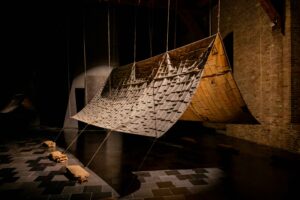 |
After losing her best friend at the age of 15, mourning became a major theme in her art. She explores loss and intimacy in a way that is both poetic and powerful, touching people both individually and collectively. Aparicio is also known for her technical precision and her attention to sustainability. She seeks to take into account the environment in which her work is displayed, creating art that is both recognisable and alienating, as if exploring the boundary between past and future.
|
One other place any visitor should try to see is Ypres Museum which currently includes an expo about the Middle Ages called “Funny, Fun and Filthy” which gives an insight into some of the things that were common in medieval cities like Ypres. The Middle Ages were vibrant rather than a dark epoch marred by violence and epidemics, said a spokesman for the museum, adding “it was, in fact, a time of merry jesters, free spirits and bawdy farces.”
“A rich urban culture flourished in Flanders between the 12th and 15th centuries and Ypres also experienced its heyday.”
|
The expo helps you discover how monks invented the mechanical clock and marvel at the glorious fashions of the day. It runs until December 1 in the Ypres Museum’s Royal Hall and a visit to the exhibition is included in the museum’s ticket price. An audioguide by Wouter Deprez costs €2/pp.
|
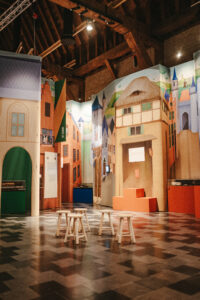 |
Every year the Last Post Association on Armistice Day organises The Great War Remembered-concert in the Ypres Saint Martin’s Cathedral. The concert aims to contribute to the commemoration by turning back time more than 100 years and immersing the audience in the atmosphere of the Great War. Instrumental and vocal music, combined with original WWI images make this concert unique (the concert on 11 November is sold out).
If you get the chance also try to pay a visit to Talbot House, at nearby Poperinge which used to be a rest centre for injured soldiers.It actually belonged to a small part of unoccupied Belgium. Poperinge became the nerve centre for the British sector, away from the commotion of the battles at the front line. In the centre of this busy town, chaplains Neville Talbot and Philip ‘Tubby’ Clayton opened a clubhouse in December 1915. Soldiers and nurses of every rank briefly left the war violence behind to enjoy a rare moment of rest and relaxation. The permanent exhibition recalls the memories of Talbot House and its former occupants. You get to discover the story of Geoff and Edith who only met four times before the Great War took Geoff to Flanders while, for the Brits, there is even an annual British Day.
Parking is free in Ypres on 11 November but note that the city centre is parking-free from 8 am onwards so you are advised to use the peripheral car parks to get to Ypres on foot. Avoid the zone around the Menin Gate and use the Poterne bridge when parking in the zone of the Sports hall / Leopold III Laan. Parking in the Sint-Maartensplein is reserved for invited guests. Only those with an official parking permit can use these parking spaces.
There is parking for people with disabilities at Surmont de Volsberghestraat, a zone near the Astridpark. The parking zone is indicated by temporary signage. You are asked to place the blue card clearly on the dashboard of your car.
The 11am Special Last Post on 11 November will be broadcasted live on large screen on Ypres Market Square. This is deal for visitors who do not have access to the area near the Menin Gate.
Further info:
https://www.talbothouse.be/


